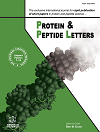
Full text loading...

Superoxide Dismutases (SODs) are enzymes that catalyzes the conversion of toxic free radicals generated during stress conditions into nontoxic forms. Thus, the enzyme superoxide dismutase contributes to the adaptation and survival of microorganisms across a variety of environmental conditions, making it an indispensable enzyme during the response to stress. In this study, we embarked upon investigating and characterizing a Superoxide Dismutase (SOD) from DNA extracted directly from garden soil, where the average temperature ranges from 4°C- 45°C.
Metagenomic DNA was extracted by employing a kit. The gene was amplified using PCR. The amplified PCR product was gel eluted and ligated into the pGEMT-easy vector, followed by its subcloning in an expression vector. The protein was purified using Ni-NTA chromatography and characterized using biophysical, biochemical, and computational approaches.
The recombinant SOD was expressed and purified; the purified protein exhibited activity and stability over a broad pH and temperature range, with optimal activity observed at 40°C and pH 8, respectively. The enzyme remains completely stable at 40°C for 3 h. However, in contrast, it loses 50% of its activity when incubated at 50°C and 60°C for 3 h. The biophysical investigation revealed stable conformation of the secondary structure of the protein, as evident from circular dichroism and intrinsic Tryptophan (Trp) fluorescence studies. In silico sequence and structural analysis revealed a close similarity of the SOD reported in this study to the Mn SOD of multi-Bacillus species. Molecular simulation dynamics experiments revealed the all-over conformational stability of protein structures at varying pH, indicating broad pH functioning of the enzyme.
The study provides a comprehensive analysis of the structure and function of a superoxide dismutase enzyme derived from a soil metagenome. A Mn2+ binding site identified in the study offers an opportunity to further facilitate engineering and design of mutant SOD.
The enzyme exhibits distinct attributes that hold significant industrial relevance. Owing to the wide functionality of SOD at different pH and temperature, it can be tailored for its potential industrial applications, including therapeutic potential, thus opening new avenues for enhanced antioxidant therapies and novel biocatalyst designing.

Article metrics loading...

Full text loading...
References


Data & Media loading...
Supplements